Do infrastructure investments have the potential to transform Africa’s economic geography? Today, Africa suffers a massive infrastructure deficit (Calderón and Servén 2010). The World Bank estimates that sub-Saharan Africa has fewer than 16 km of road per 100 km2 of land surface, which is far below other developing regions. During the last decade, numerous countries have invested in modernizing their infrastructure networks. Plans are ambitious and include the revival of the East Africa railway network and the proposed rail/road corridor connecting South Sudan to the Indian Ocean. In 2011, transportation infrastructure accounted for 20% of World Bank lending. Chinese investments and firms are also playing a leading role, seeking to unlock the continent’s resource potential. Despite these efforts, little is known about the long-term economic impact of roads and railroads in Africa.
What lessons can be drawn from history? In particular, did colonial railroad investments transform Africa’s economic geography? And by shaping the economic geography in the past did railroads set the course for future developments? Theoretically, railroads may only play a limited role if there is only one spatial equilibrium that is predetermined by fundamental locational advantages, such as geographic endowments (i.e. fertile soils, water, coastal access, a favourable climate, beautiful scenery). In this case, fundamental advantages would initially define the location of economic activities and this would subsequently attract the railroad. Conversely, our forthcoming research (Jedwab et al., Jedwab & Moradi 2016) explores the theoretical possibility of the existence of multiple spatial equilibria – i.e., that the placement of railroads created one equilibrium out of the many alternative possibilities – and discusses practical implications for African infrastructural development.
Colonial railroads in Africa
Colonial railroads are especially interesting because European colonisers did not necessarily place railroads by selecting locations of intrinsically high economic potential, but rather based on the cheapest or shortest route. Therefore, we can establish that long-run effects of railroads, if any, can be traced back to path-dependent investment choices rather than to fundamental locational advantages. A case in point is the Kenya-Uganda railroad (illustrated in Figure 1). This railroad was built between 1896 and 1901 to connect landlocked Uganda to the coast (i.e., Mombasa) at the lowest possible cost. Kenya was merely a transit territory; the railroad bypassed highly populated areas en route to Lake Victoria. Tellingly, the Kenya-Uganda railroad was called the “Lunatic Express” because critics doubted the usefulness of the railroad “from nowhere to utterly nowhere.”
Figure 1. Constructing the Uganda Railway through the savannah, 1896-1901
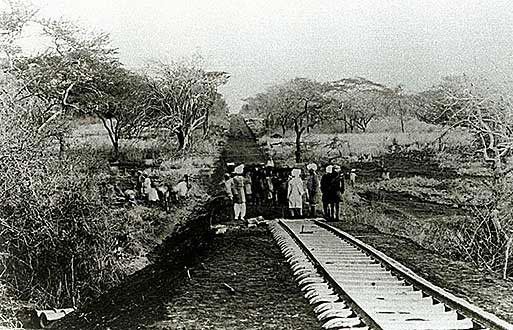
The railroad itself provided an immediate advantage for the locations it passed through. As Winston Churchill noted in his 1908 book, My African Journey, “From Mombasa is the starting-point of one of the most wonderful railways in the world […] a sure, swift road along which the white man and all that he brings with him, for good or ill, may penetrate into the heart of Africa as easily and safely as he may travel from London to Vienna.’’ However, as has often been the case in the African countries this direct advantage of the railroad disappeared over time. African railroad systems tended to collapse after independence due to mismanagement, lack of maintenance and the adoption of a new transportation technology (i.e., motor roads). Roads levelled the pure advantage of lower transportation costs and could have potentially reconfigured the spatial equilibrium.
But have colonial-era railroads persisted in defining Africa’s economic geography in spite of their post-colonial decline? Ultimately, this depends on whether there have been strong local increasing returns. These typically stem from the co-location of production factors and industries: placing industries (but also people) at the same location will result in a much higher output (and income) as compared to a situation in which the same industries are located apart. Co-location relates to a coordination problem, as it is generally not obvious which location should receive and accumulate these factors. It could be any location. Railroads may have solved the coordination problem. By attracting production factors during the colonial period, railroad cities were indicating where industries and factors should co-locate from that point onward. This may have speeded up investment and development, and railroads may have defined the economic geography in this way. Increasing returns may have come from sunk investments. If transportation networks, schools, hospitals or buildings are expensive to construct, activities will not shift to an alternative location with better underlying fundamentals. Overall, one would expect increasing returns to be less important in relatively poor and agrarian countries. This is because increasing returns to scale are typically found in manufacturing. Agriculture, in contrast, requires appropriate soils and climatic conditions; manufacturing, in contrast, is “footloose”. Further, in poorer countries with limited pre-existing investments, it should be relatively cheap to replace existing investments upon relocating factors to a more suitable location.
Colonial railroads, European settlers and urbanization in Kenya
To empirically test investigate the long-term effects of railroad construction we constructed new panel data for Kenya at a fine spatial level over one century (1901-2009) from numerous novel and unexploited sources, including colonial voters’ rolls (1920-1930), African census enumeration (1962-2010), primary and secondary schools, and colonial explorer (1860) and railroad maps (1890-1930).
Figure 2 illustrates how colonial railroads determined the location of European settlers, which in turn determined the location of the main cities of the country at independence. However, railroads declined and settlers left after independence. Most locations are now accessible by road. The production of coffee – the main export crop and the engine of growth in the European farming areas – collapsed in the 1980s owing to lower international market prices. Locations along the railroad lines thus lost their initial advantage in terms of transportation costs, human capital and agriculture. Yet, the ranking of these cities has persisted. “Railroad cities” are qualitatively different: they are wealthier than non-railroad cities of similar sizes.
What can explain the stability of the spatial equilibrium? Using regression analysis, we find that colonial sunk investments (e.g., schools, hospitals and roads) partly contributed to urban path dependence, but railroad cities mostly persisted because their early emergence served as a mechanism to coordinate contemporary investments for each subsequent period.
Figure 2. Emergence and persistence of railways and towns in Kenya, 1901-2009
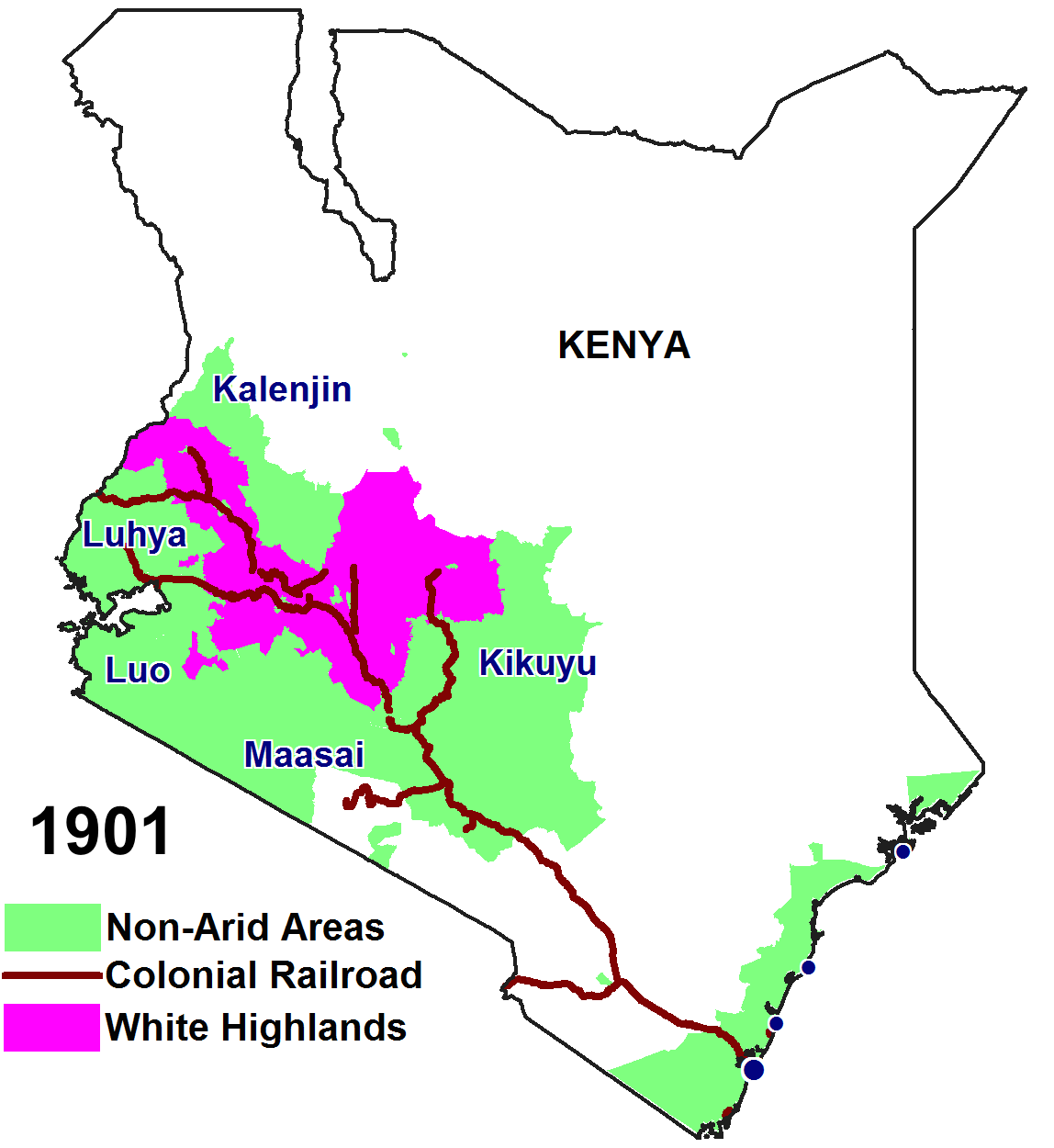
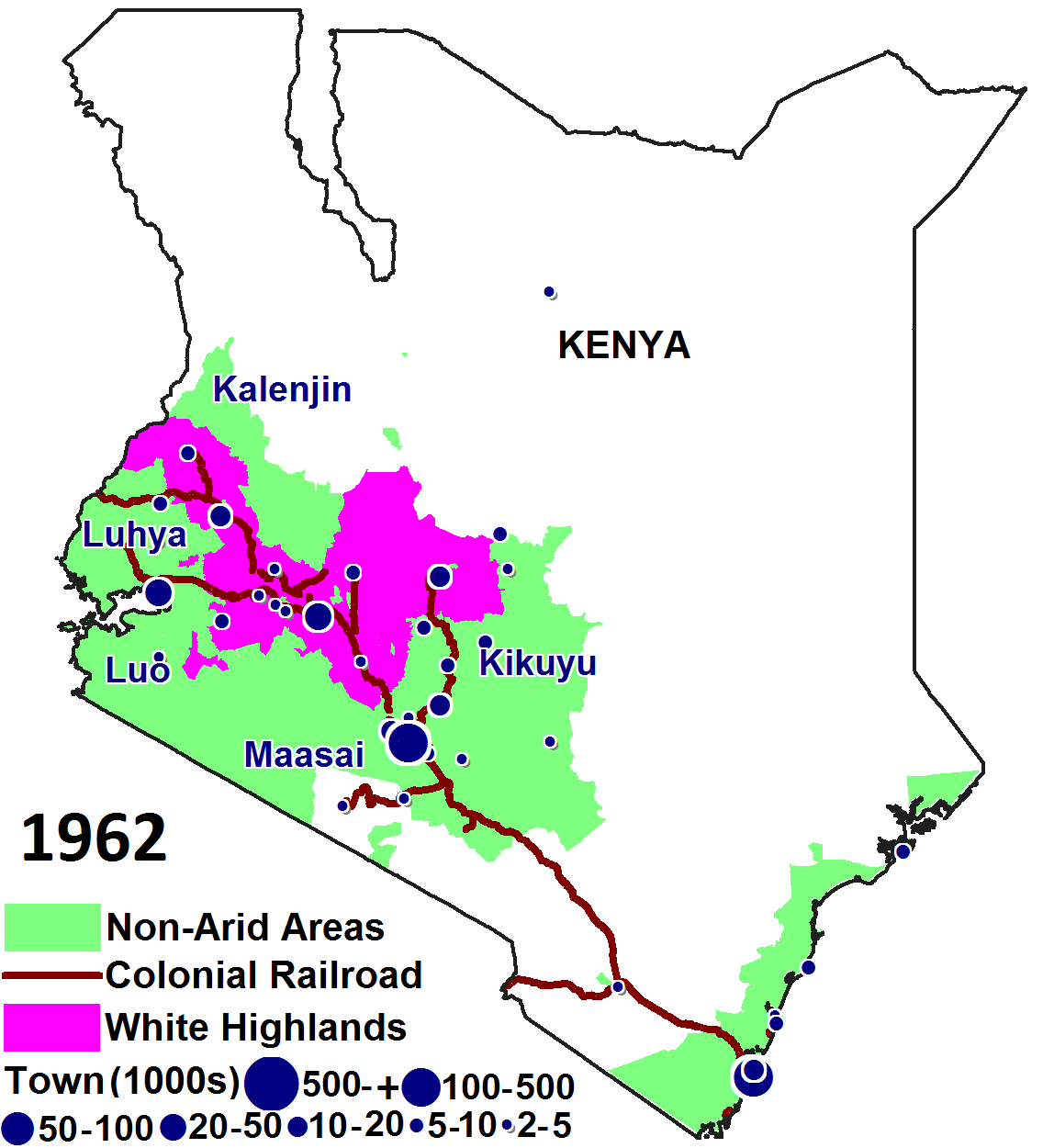
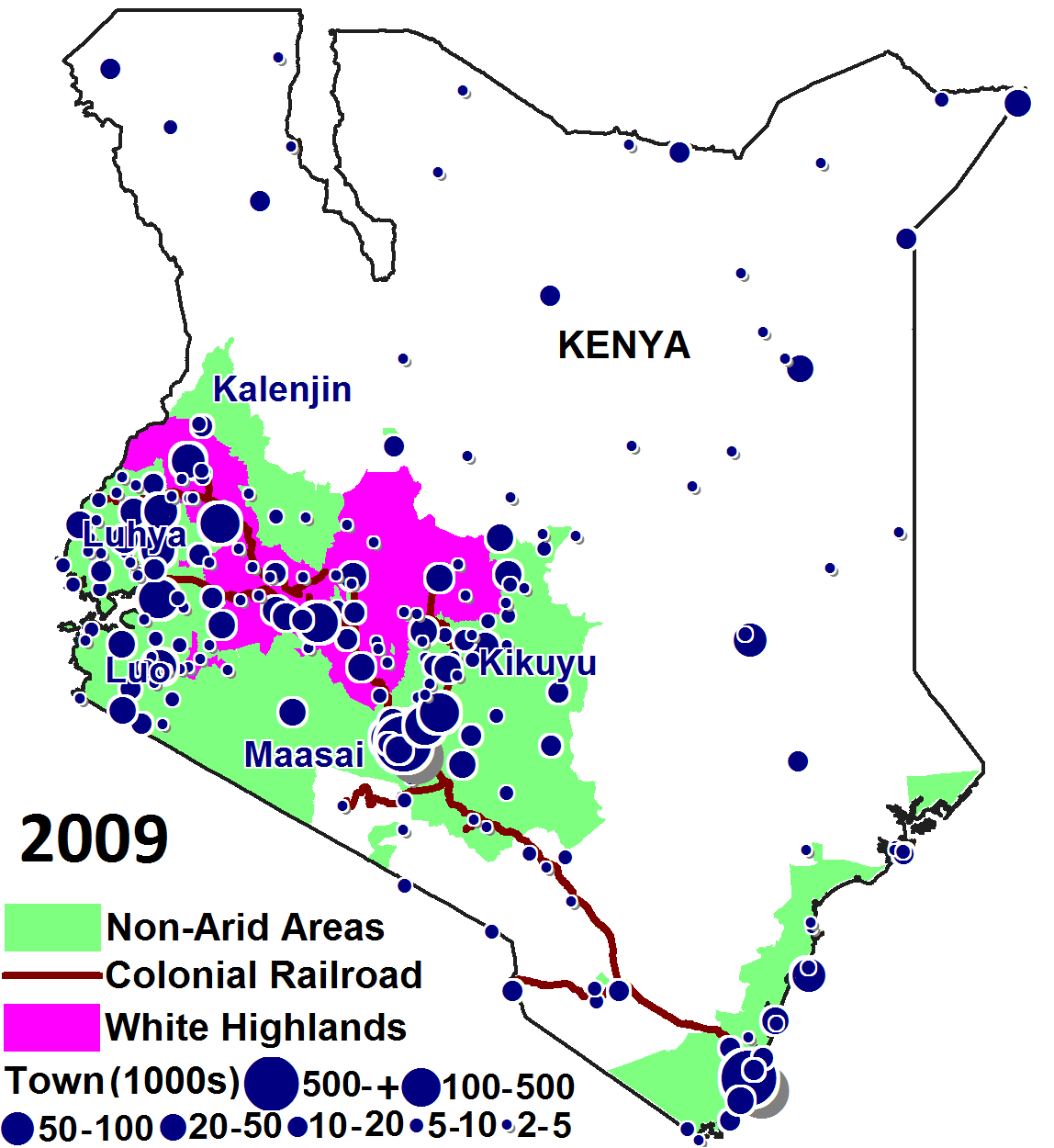
What lessons does the economic history of railroads teach us?
The results of our study highlight the existence of multiple spatial equilibria. This is good news for African economies insofar as regional policies may have the potential to attract economic activities to locations not endowed with fundamental advantages. It is much easier to provide infrastructure than it is to change deep-rooted institutions. However, the channels of why railroad cities persist point to several caveats. The impact of infrastructure investments will primarily depend on whether the coordination failure of where cities and economic activities should be located has already been solved. If solved, new investments – such as the road constructions in the 1960s – will only have a minor impact. Conversely, new infrastructure can transform the economic landscape in poor, remote regions with high trade costs.
References
César Calderón and Luis Servén (2010), “Infrastructure and Economic Development in Sub-Saharan Africa”, Journal of African Economies 19(S), pp. 13-87.
Jedwab, Rémi, Edward Kerby & Alexander Moradi (forthcoming), “History, Path Dependence and Development: Evidence from Colonial Railroads, Settlers and Cities in Kenya”, The Economic Journal.
Jedwab, Rémi & Alexander Moradi (2016), “The Permanent Effects of Transportation Revolutions in Poor Countries: Evidence from Africa”, Review of Economics and Statistics 98(2), pp. 268-284.
An extended version of this blog post has been published in March 2017 on VOX.eu, the CEPR’s Policy Portal.
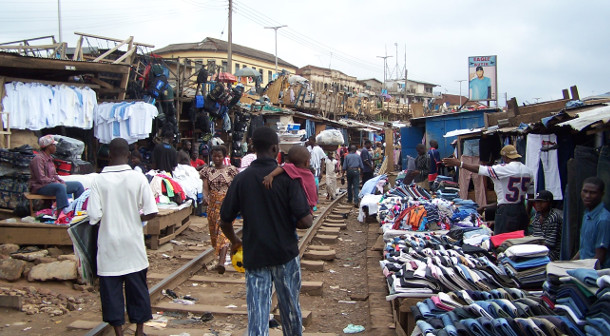
Thanks for this interesting post! Then, to my mind, the next stage is to evaluate the role of intermodal connections and how colonial railways and colonial ports interacted. Linkages among both factors are clear and the sources permit to explore a range of topics tied to transport infrastructures and economic development. On the other hand, the “return of railways” (i.e.: Angola) could be a key factor of land, social and economic integration in the near future. However, it is interesting to note if this “return” will follow the same schemes established during the colonial age. Anyway, the topic is absolutely thrilling.